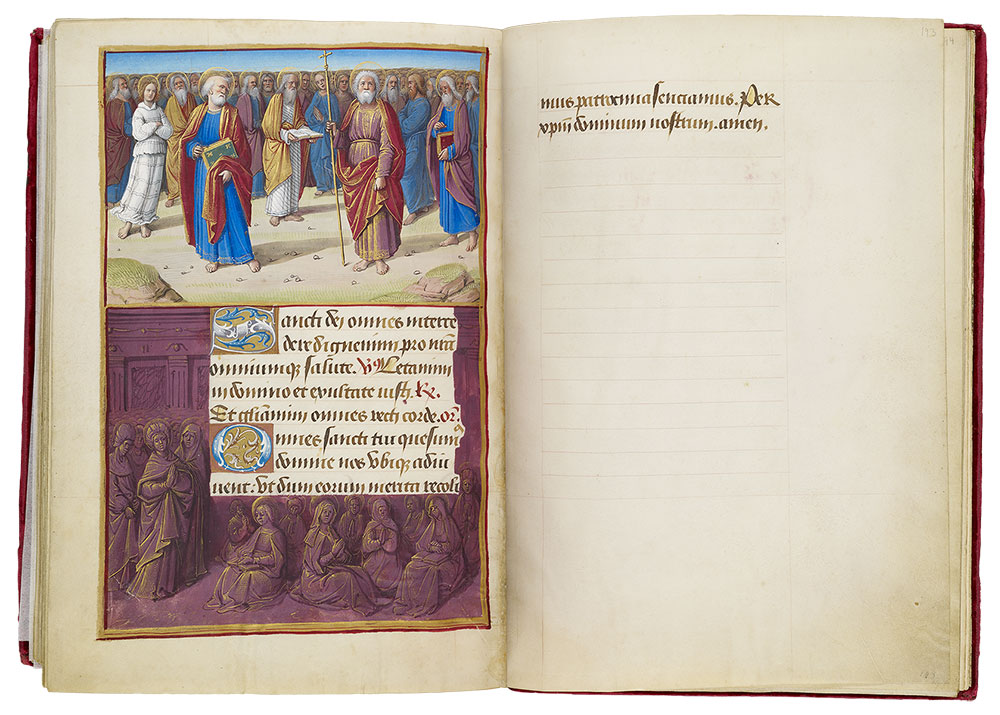
All Saints: All Male Saints
Hours of Henry VIII
Illuminated by Jean Poyer
Gift of the Heineman Foundation, 1977
All Saints: All Male Saints
Border: All Female Saints (fol. 192v)
All Saints was a catchall feast of Eastern origin, which celebrated the "martyrs of the whole world" on the first Sunday after Pentecost. (In the early Church all saints, with the exception of the Apostles, were martyrs.) Images of all saints typically show them in ranks. In accordance with a well-established hierarchy, the male saints out-ranked the females (hence the women's relegation to the margin).
During the last few years (ca. 303–5) of Emperor Diocletian's reign so many Christians were martyred that it became impossible for each to have his or her own assigned day for commemoration, hence this all-encompassing feast. With the dedication of the Pantheon in Rome to St. Mary of the Martyrs on 13 May 609 (or 610), the feast changed to that date. When Pope Gregory III dedicated a chapel on November 1 to All Saints in St. Peter's Basilica, the feast was changed to that day, where it has remained. According to the Golden Legend, the date was changed so that greater crowds could come to Rome after the harvest and vintage to participate in the popular celebration. In English the feast is known as All Hallows and the night before as Hallowe'en (short for All Saints' Eve).
Within the context of Suffrages in a Book of Hours, this massive grouping of saints serves an additional purpose. Praying to all the saints at once, encourages them to join in an intercession. Surely it would be impossible for God not to grant the prayers of all the saints on one's behalf. Little wonder that the feast day was such a favorite.
The male saints were further ordered by status: first came the Apostles, followed by martyrs, and then confessors. Poyer suggested these divisions by placing Peter and Paul at the head of the contingent. Close behind them are the four evangelists; the young man at left dressed in white is John, the beloved disciple. Behind them, the rest of the saints form an isocephalic horizon.
The women in the margin of the lower image, seated with books or praying, have no identifying attributes. (Feast day: November 1)
